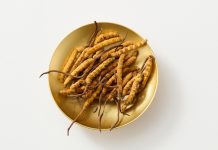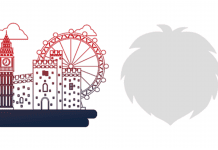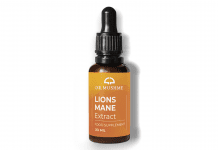
Dr Carey Clark of the American Cannabis Nurses Association outlines their mission, how they work to promote education, and boost awareness in the nursing community.
Cannabis is becoming more available across the US, yet lingering stigma and a lack of education are preventing further progress. Health Europa spoke to Dr Carey Clark, President of the American Cannabis’ Nurses Association who explains the work the organisation are doing to tackle this, and how collaboration could be the key to reaching more professionals for the benefit of patients.
How and when did you first become aware of the benefits of medical cannabis?
Around 10 years ago, I became aware of using cannabis as a medicine and I lived in an area in California where many people grew their plants outdoors. I did believe that it worked to palliate many symptoms, but at that time I had no understanding of the endocannabinoid system and the scientific basis of cannabis effects. When I moved to Maine, I created a student-faculty chapter of the American Holistic Nurses Association, and the students would plan different events and invite speakers to campus. On one occasion they brought a local doctor, Dustin Sulak, to campus who explained physiologically how cannabis worked in the body through the endocannabinoid system. I was very excited to learn the scientific basis of how cannabis could palliate and support healing around so many medical conditions.
Dr. Sulak came back to the university several more times to guest lecture and eventually he told me about this organisation called the American Cannabis Nurses Association, which I was previously unaware of, so I joined it. I developed the research and education committee, and when the organisation was looking for someone to run for President, I decided to run.
At the same time, I was doing my own delving into cannabis science and I started to do presentations around the endocannabinoid system and what nurses need to know to support patients using medical cannabis. In particular, I have worked with many oncology nurses both on site and at national and regional conferences to support them in understanding how they can best support patient use of medical cannabis. I’m currently editing what we think will be the first textbook for nurses to educate them about the medicinal benefits of cannabis.
Can you tell me a little about what cannabis nurses do and why there was a need to create the American Cannabis Nurses Association?
It is still really an emerging field. Here in the United States, a patient can simply get a recommendation for cannabis and beyond that there is often little to no advice or support to guide patients in self-titrating the medicine. It varies from state to state, but historically there has not been great information given to patients about how to use the medicine, how to dose it properly, how to avoid side effects, how to manage the levels of THC (because this is often what causes the side effects), how to manage medical cannabis use from a financial perspective, and most importantly how to use it safely and effectively.
This gap is a place that cannabis nurses are now filling. There are some nurses who work in dispensaries and they educate patients on how to use this medicine safely. There are also nurses who do private consulting to help patients figure all of this out because it can be overwhelming. Patients may walk into a dispensary and there might be cannabis flower, candy, chocolate, popcorn and so on, so some level of guidance is required. Nurses operating in dispensaries is still a rarity, but there are some advanced registered practice nurses, or nurse practitioners, depending on the state they practice in, who might be able to recommend cannabis to patients.
There are published guidelines on how to titrate this medicine, and that is essentially to start very low on the THC level and very slowly build this up. Providing patients have access to medicine that is adequately labelled then they can start with 1 mg of THC, and then slowly increase from there and then slowly increase from there limiting to roughly 15-20mg of THC as the maximum daily dosage. There are established guidelines, but they are not well implemented and of course on the dispensary side they are there to make money, so they sometimes have different interests versus helping patients use cannabis safely and effectively.
We also want to support patients; on our website you can find our scope and standards of practice and this document outlines how we support patients by also encouraging them to take steps toward enhancing their endocannabinoid system. When people are deficient in making their own endocannabinoids, then they can benefit from exogenous sources such as cannabis.
Also, there are other things we can do to support homeostasis and the endocannabinoid system, such as exercise, yoga, meditation, acupuncture, and eating a diet that’s high in flavonoids and has enough omega 3 fatty acids. The cannabis nurse is really a holistic nurse, as they support the patient in learning how to change their lifestyle so they can be healthier overall.
What was the goal when the American Cannabis Nurses Association was created and what challenges have been faced along the way?
It is essentially educating both nurses and patients, but increasingly many different members of the medical community. We are also advocating for patients to have access to safe and tested medicines and eventually we would like to see nursing create a greater presence on the research side of things.
The challenges of course are usually related to fact that cannabis is still federally illegal. Another big challenge is the lingering stigma around cannabis use. In many ways we’re still trying to fight the lingering Reefer Madness stereotype, as we are helping people to understand the science and to understand that cannabis does physiologically work to support homeostasis of body systems.
We have had some good things happen recently. Last year here in America, the National Council of State Boards of Nursing published a document in the Journal of Nursing Regulation which outlines the 6 essential areas that all nurses need to be educated in to support patients with the medicinal use of cannabis. It talks about knowing the laws in your State and what medical marijuana (although we always call it cannabis) programs are available. Nurses need to know the science, the body of evidence and that we cannot stigmatise patients for their autonomous decision to use this medicine.
This has been a very helpful document to begin to support nurses with their educational endeavours. I also have cards from the National Council of State Boards of Nursing which has links to the article, and we can pass this on to nurses at conferences so they can take the information back to their workplaces. That way when nurses meet resistance from other nurses or colleagues, they can show that they are required to be educated in this area and that medical cannabis becomes a legitimate workplace discussion.
How is the ACNA helping to increase awareness and promote education?
We go out to national nursing conferences and we’ll have a table. This year so far, we have tabled at Hospice & Palliative Nurses Association, American Nurses Association, American Holistic Nurses Association and Oncology Nursing Society conferences. We create awareness by going there directly to the source with the nurses, giving them some basic medical cannabis information, and encouraging them to join the organisation as well, because we have things like ongoing educational webinar series. We’re also getting ready to have a Cannabis Nursing conference this December in New Orleans. Doing this outreach to other nurses is very important, and we will also start partnering with other organisations to reach more nurses. There are lots of different avenues we can take in the future.
The tide seems to be beginning to turn with regards to cannabis globally. How do you anticipate the role of the American Cannabis Nurses Association will evolve looking to the future?
We’ve come a long way during my presidency alone, thanks to a great team of nurses who are passionate about the organisation. We are now a member of The Nursing Organisation Alliance which encompasses 50-100 other nursing organisations. They provide training and support around running professional nursing organisations, so I see us really evolving toward being even more recognised and accepted by other nursing organisations which is very important. On a global scale I’d love to see us have chapters or come together in a more international sense with nurses from around the globe because they have the same educational needs. ACNA could also support other countries, States or regions in developing their own organisations as well.
There is an ongoing need for education and ending the stigma. There is only a certain amount of advocacy 501c3 not for profit organisations here can do, so political activism can be difficult under this organisational umbrella. However, that doesn’t mean we can’t be supporting others who are taking those big political leaps. I think globally are moving out of a prohibition era and into a regulation era. This shift may have started in the USA where medical cannabis became legal state by state, and now we have places like Canada where cannabis is no longer federally illegal.
As we move out of the prohibition era, we also run the risk of in some ways losing our focus on the medicinal benefits of the herb and it perhaps being overshadowed by a recreational movement. There are some people who say that all cannabis is medicinal but there are people who have the intent to use it from a more adult, recreational perspective, and so one of the things we need to think about on the global level is running the risk of this being regulated like alcohol or even other medications when it’s a herbal plant that has clear medicinal value.
Cannabis grows freely in nature, so I do think we’re in this sort of interesting era of moving towards regulation that isn’t necessarily ‘freeing’ the plant. There are some great things about regulation; such as cannabinoid medicines being more readily available, the testing and labelling of cannabis products, and the decreased use of pesticides. But we also run the risk of certain vulnerable populations not having access because of cost and cannabis moving into the big business corporate model, with people no longer being directly connected to the plant. Things are changing rapidly – and it will be interesting to observe how the next era unfolds.
Dr Carey Clark
President
American Cannabis
Nurses Association
+720 881 6047
https://cannabisnurses.org/
Please note, this article will appear in issue 10 of Health Europa Quarterly, which is available to read now.









